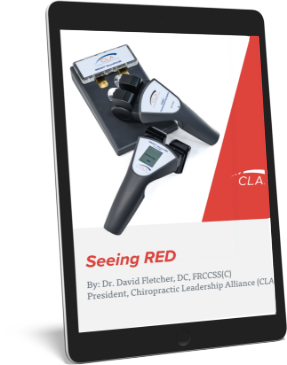By Dr. Christopher Kent
The importance of autonomic tone is implicit in chiropractic practice. D.D. Palmer wrote, “Life is an expression of tone. Tone is the normal degree of nerve tension. Tone is expressed in function by normal elasticity, strength, and excitability…the cause of disease is any variation in tone.” [1]
Physiologist I.M. Korr explored the clinical implications of high sympathetic tone. Korr observed that, “high sympathetic tone may alter organ and tissue responses to hormones, infectious agents, and blood components. It alters cellular metabolism and may eventually lead to serious pathologic changes…Sustained, exaggerated sympathetic stimulation may, over a period of time, lead to chronic circulatory changes in target tissues and visceral organs which can, of course, impair their function and even threaten their survival. High sympathetic tone can also lead to other changes, in structure, function and functional capacities.” [2]
In clinical practice, autonomic tone may be evaluated by measuring skin temperature differentials. Uematsu et al determined reference values for skin temperature differentials based upon 90 asymptomatic “normal” individuals. The authors stated, “These values can be used as a standard in assessment of sympathetic nerve function, and the degree of asymmetry is a quantifiable indicator of dysfunction…Deviations from the normal values will allow suspicion of neurological pathology to be quantitated and therefore can improve assessment and lead to proper clinical management.” [3]
A recent paper by Lopez describes a proposed mechanism for control of vasomotor tone. Lopez wrote, “These postganglionic cells show bursts of activity with a periodicity that is related to cardiac and respiratory cycles, a coordination that might help to optimize the blood supply to every organ. How is this bursting activity controlled? One leading idea is that an oscillatory network in the brainstem entrains the sympathetic neurons, causing them to fire simultaneously.” [4]
What mediates this process? According to Staras et al [5] the answer is afferent somatic activity which can “reset” the oscillatory networks. This transiently synchronizes sympathetic neuron firing.
The potential implications to the chiropractor are profound. The oscillatory network in the brainstem may be influenced by upper cervical subluxation. Furthermore, stimulation of mechanoreceptors and nociceptors in the intervertebral motion segment by chiropractic adjustments may “reset” the oscillatory network, synchronizing sympathetic neuron firing.
As basic science research explores neurobiologic mechanisms which may have profound clinical implications, the practicing chiropractor is faced with the challenge of developing improved strategies for patient care. Objective assessment of autonomic tone by measuring skin temperature differentials is an important component of that strategy.
References
1. Palmer DD: “The Chiropractor’s Adjustor,” Portland, OR. Portland Publishing House, 1910.
2. Korr IM: “Andrew Taylor Still memorial lecture: research and practice — a century later.” JAOA 1974;73:362.
3. Uematsu S, Edwin DH, Jankel ER et al: “Quantification of thermal asymmetry.” J Neurosurg 69:552, 1988.
4. Lopez JC: “Autonomic nervous system. Rhythms of the periphery.” Nature Reviews Neuroscience 2001;2:454.
5. Staras K, et al: “Resetting of sympathetic rhythm by somatic afferents causes post-reflex coordination of sympathetic activity in the rat.” J Physiol 2001;533:537.




























































